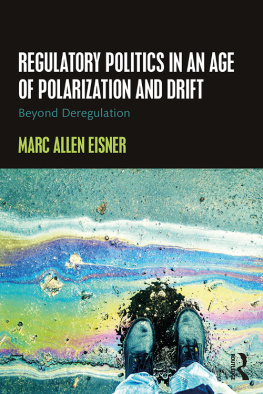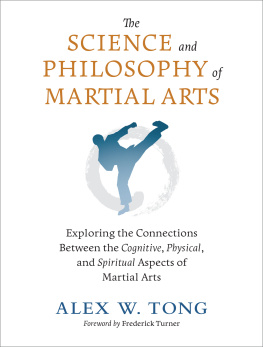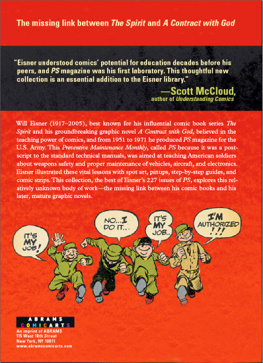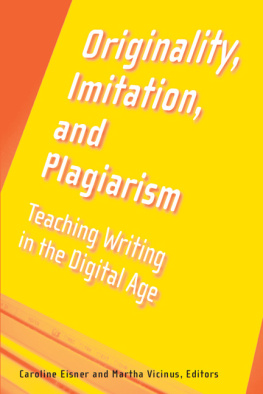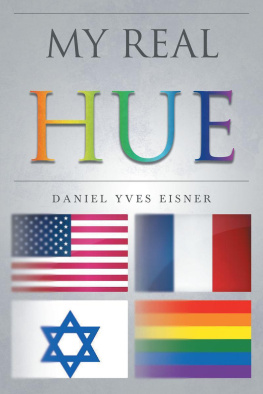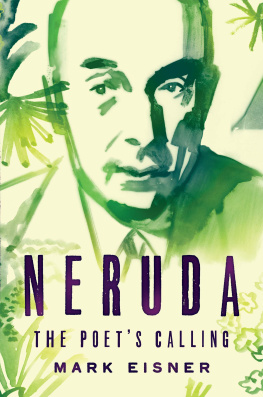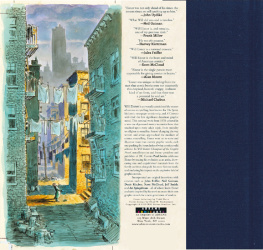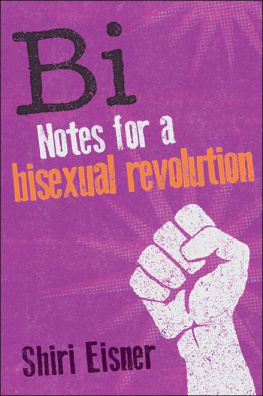The
ARTS
and the
CREATION
of
MIND
The
ARTS
and the
CREATION
of
MIND
ELLIOT W. EISNER
YALE UNIVERSITY PRESS/NEW HAVEN & LONDON
Published with assistance from the foundation
established in memory of Philip Hamilton McMillan of
the Class of 1894, Yale College.
Copyright 2002 by Elliot W. Eisner. All rights reserved.
This book may not be reproduced, in whole or in part, including illustrations, in any form (beyond that copying permitted by Sections 107 and 108 of the U.S. Copyright Law and except by reviewers for the public press), without written permission from the publishers.
Designed by Mary Valencia
Set in Meridien type by Integrated Publishing Solutions.
Printed in the United States of America by R.R. Donnelley & Sons,
Harrisonburg, Virginia.
Library of Congress Cataloging-in-Publication Data
Eisner, Elliot W.
The arts and the creation of mind / Elliot W. Eisner.
p. cm.
Includes bibliographical references and index.
ISBN 0300-09523-6 (cloth : alk. paper)
1. ArtStudy and teachingPhilosophy. 2. Art and society 3.
ArtStudy and teachingUnited States. I. Title.
N84. E38 2002
707.1273dc21 2002005871
A catalogue record for this book is available from the British Library.
The paper in this book meets the guidelines for permanence and durability of the Committee on Production Guidelines for Book Longevity of the Council on Library Resources.
10 9 8 7 6 5 4 3 2 1
For my grandsons, Ari, Seth, and Drew. MAY THE FORCE BE WITH YOU.
CONTENTS
ACKNOWLEDGMENTS
My interest in the visual arts began in elementary school. In fact the visual arts were a source of salvation for me at both the elementary and secondary school levels; I might not have got through without them. Upon graduating from my secondary school in Chicago, I enrolled as a student in the School of the Art Institute of Chicago and later in the Institute of Design of the Illinois Institute of Technology. After completing a masters degree at the Institute of Design of the Illinois Institute of Technology, I taught art in the Chicago Public Schools and later at the Laboratory School of the University of Chicago. I have worked in the field of art education for over thirty-five years. Much of what I have to say about the arts in education has been informed by my experience as a painter and as a teacher of art.
In the preparation of this book, as anyone knows who has written one, debts are owed to many people. Some are owed to scholars whose work has influenced my thinking, including the values I embrace. Rudolf Arnheim, John Dewey, Nelson Goodman, and Susanne Langer, from the philosophic arena, are among those to whom I owe my deepest philosophical debts.
In the arts in education, among many others I am indebted to Manual Barkan, David Ecker, Edmund Feldman, Jerome Hausman, and Ellen Winner.
In the field of education I am indebted to Mike Atkin, Tom Barone, Larry Cuban, Stephen Dobbs, Howard Gardner, Maxine Greene, Philip Jackson, Ray McDermott, and Alan Peshkin.
Among the most important of those on whom I have depended and tested ideas, and with whom I have consulted, are my former students. Over many years, students come to shape your life in a multitude of ways. They challenge, cajole, deflate, and encourage. I am surely indebted to those I have had the privilege of teaching.
I also wish to thank Rebecca Chan and Mary Li, from Macao and Hong Kong, respectively, for their assistance in securing for me student work done in Rebeccas class. She is an extraordinary teacher of art, and when I had the opportunity to obtain her students work, I took advantage of the opportunity with alacrity.
Several colleagues read and commented on the manuscript in draft form. It is better because of their advice. I want to thank Hilary Austen, Doug Boughton, Kerry Freedman, and Mary Ann Stankiewicz for their helpful advice.
I especially want to express my appreciation to Shifra Schonmann for her careful and helpful constructive review of the entire manuscript. Her assistance has been invaluable.
Finally, there are two others for whom my gratitude is boundless. The first is Tanya Chamberlain, my secretary, friend, and utility infielder at Stanford. This book simply would not have been written without her care and constructive assistance in finding just the right material for me, often before I knew I needed it. She provided what I needed in countless ways.
To my wife, Ellie, I express my deepest gratitude. She knew when to afford me space, when to allow me to work on the dining room table rather than in my study, and when to turn up the heat so that I maintained the focus I needed to write coherent prose. I owe her more than I can say.
INTRODUCTION
The Arts and the Creation of Mind situates the arts in our schools and examines how they contribute to the growth of mind. Traditional views of cognition and the implications of these views for the goals and content of education have put the arts at the rim, rather than at the core, of education. Schools see their mission, at least in part, as promoting the development of the intellect. Hard subjects such as mathematics and science are regarded as primary resources for that development, and the processes of reading, writing, and computing are believed to be the best means for cultivating the mind. We want, especially in America today, a tough curriculum, something rigorous, a curriculum that challenges students to think and whose effects are visible in higher test scores. At best the arts are considered a minor part of this project.
Although the arts in American schools are theoretically among the so-called core subjects, and although school districts and indeed the federal government identify them as such, there is a huge ambivalence about their position in the curriculum. No one wants to be regarded as a philistine. Yet at the same time privilege of place is generally assigned to other subject areas. Despite the recent hoopla about their contributions to academic performance, the arts are regarded as nice but not necessary.
One aim of The Arts and the Creation of Mind is to dispel the idea that the arts are somehow intellectually undemanding, emotive rather than reflective operations done with the hand somehow unattached to the head. In the following pages I advance quite a different view. I argue that many of the most complex and subtle forms of thinking take place when students have an opportunity either to work meaningfully on the creation of imageswhether visual, choreographic, musical, literary, or poeticor to scrutinize them appreciatively. To be able to create a form of experience that can be regarded as aesthetic requires a mind that animates our imaginative capacities and that promotes our ability to undergo emotionally pervaded experience. Perception is, in the end, a cognitive event. What we see is not simply a function of what we take from the world, but what we make of it.
The world that students now live in and that they will enter as adults is riddled with ambiguities, uncertainties, the need to exercise judgment in the absence of rule, and the press of the feelingful as a source of information for making difficult choices. Whether work in the arts has consequences that extend to all aspects of the world cannot now be determined with any degree of confidence. What can be determined with a high degree of confidence is that work in the arts evokes, refines, and develops thinking in the arts. We might cautiously reason that meaningful experience in the arts might have some carryover to domains related to the sensory qualities in which the arts participate.
Next page




